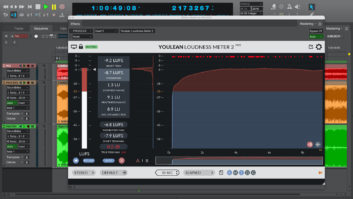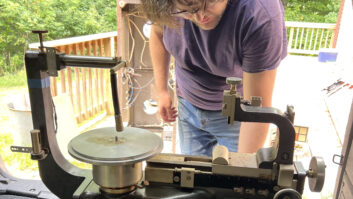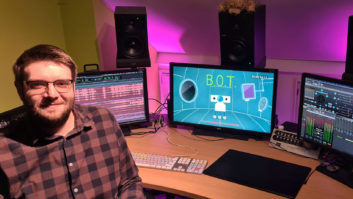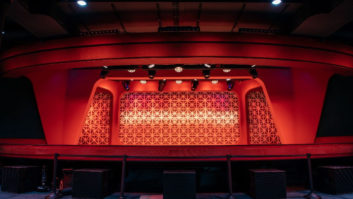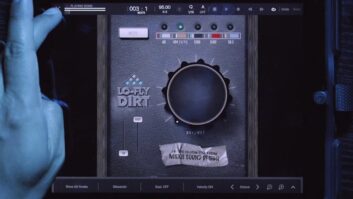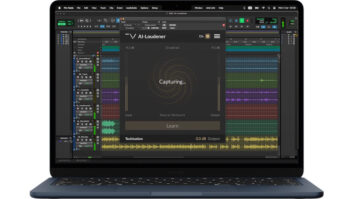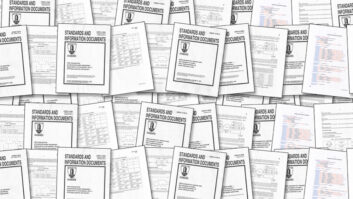It’s a common lament from television viewers: “The commercials are too loud” or “The volume jumps all over the place when I flip through the channels.” With analog broadcasting, the tendency for stations to just squish everything flat somewhat masked level inconsistencies between content elements. With digital broadcasting, we’re finally preserving some dynamics in the programming–a lot of it, in fact (Hallelujah!). Perceived level differences channel-to-channel, program-to-program and program-to-commercial are now obvious, and obviously annoying to viewers.

A recent Harris Interactive poll found that 86 percent of American viewers feel that commercials are louder than the content they support (57 percent say commercials are much louder).
Now, let’s give our broadcast audio brethren some credit. Some of the best minds in audio are working diligently to improve the situation, and the situation today is far better than it was at the beginning of the digital transition, and is continuing to improve. This was evidenced by the daylong DTV Audio Group’s Loudness Management Seminar, held at NAB time in Las Vegas. A few years back, many of these same individuals got together at this event’s predecessor in Vegas, one of Pro Sound News’ Surround Broadcast Conferences.
At that time, the panel discussions revealed that various networks had differing practices and little communication about the issues. The good news is, they began and continued a dialog, organized under a subcommittee of the ATSC (Advanced Television Systems Committee) voluntary standards organization, and have produced and are implementing a set of procedures and guidelines designed to give the consumer a predictable and consistent listening experience.
The recommended practices document (A85), “Techniques for Establishing and Maintaining Audio Loudness for Digital Television” is available for download at atsc.org and at (if you are in the biz, you should check the DTV Audio Group out, anyway) dtvaudio.org.
The document is comprehensive and reasoned. That said, and even though Richard Friedel, EVP and GM, Network Engineering and Operations, Fox Networks, who introduced Quick Start Guides to A85 in Vegas, says that the essence of the recommended practice can be boiled down to a single statement. “‘Measure it and label it properly’—it’s that simple,” implementation is not trivial. But, as noted even a few years ago as some of these conversations began, with DialNorm and other tools at our disposal, the problem is one we can and must address. Addressing loudness issues is becoming easier and more practical with a few years of experience under our belts, and with the availability of new metering and other hardware and software tools.
Roger Charlesworth, consultant and executive director of the DTV Audio Group, launched the discussions by saying, “At the root of today’s loudness dilemma is the inescapable fact that many broadcasters failed to recognize at first the fundamental differences between the incumbent analog NTSC audio system and the emergent DTV audio standards, and failed to plan for their more powerful capabilities.”
As David Converse, VP operations, director of engineering for ABC owned stations, says, “If [broadcasters] don’t follow a standard, we can’t predict what the customer experience is going to be.” With A85, the leadership of the national networks, and education initiatives like those of the DTV Audio Group, this situation can be resolved. Matt Braatz, senior VP of broadcast operations at NBC Universal, shared that his team recently had to “educate internally” to get the company on board for supporting and implementing the recommended practices, with the result that they now have a leadership role in and very consistent performance.
Inaction may not even be legal soon—the House of Representatives has passed and sent on to the Senate the CALM (Commercial Advertisement Loudness Mitigation) Act, which would regulate the volume of commercials and impose penalties for noncompliance (Converse called the Act an “analog solution to a digital problem”). As the industry is already moving towards voluntary compliance with A85, legislation seems unnecessary, but the likelihood of passage is high. Despite what may be onerous oversight, logging and other implications of the CALM Act, A85 may be codified into the act, making its practices mandatory.
You should soon be hearing more consistent DTV audio levels, if you aren’t already.

